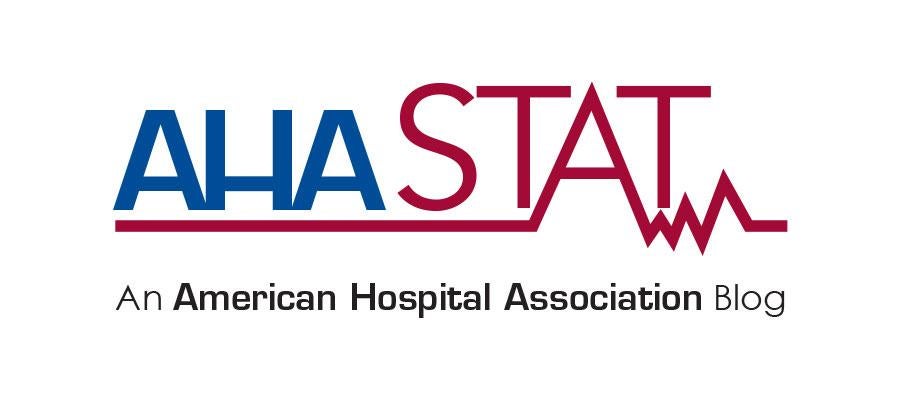Lown Institute Once Again Cherry-Picks Data to Fit their Preconceived Notions about Hospitals

America’s hospitals and health systems do far more than any other part of the health care field to advance health in their communities. The fact is that all hospitals and health systems — regardless of size, location, and type of ownership — are dedicated to not only caring for their patients, but for their entire communities in a wide variety of ways.
This is more than borne out by the data. A comprehensive report by the international accounting firm EY has consistently found that the community benefits provided by tax-exempt hospitals far outweighs the value of their federal tax exemption. In the most recent analysis, the value was 9 to 1: for every one dollar in tax exemption, hospitals provided nine dollars of community benefit. Additionally, a 2022 analysis shows that tax-exempt hospitals provided more than $110 billion in total benefits to their communities in fiscal year 2019 (up from $105 billion in 2018), the most recent year for which comprehensive data is available.
The Lown Institute’s latest report on hospital community benefits, like the previous one, is wrong and cannot be taken seriously as it once again relies on obvious biases and suffers from serious methodological flaws. Here are some of the most blatant issues with their report:
- The report cherry-picks categories of community investment while simply ignoring others of great importance, such as researching life-saving treatments and cures and training and educating the next generation of doctors, nurses, and other caregivers. By doing this, Lown diverges from the consensus standards accepted by the IRS, Congress and health care experts, while also completely overlooking many of the absolutely essential contributions hospitals make to their communities that, in many cases, may not be filled by others. For example, during the COVID-19 pandemic, many hospitals invested significant funds and expertise into developing COVID-19 tests after setbacks from public health agencies. Hospitals also expanded treatment capacity as cases surged, set up new sites of care in the community, established vaccine clinics and launched outreach campaigns to ensure everyone had access to tests and vaccines, to name just a few examples.
- The report ignores the unprecedented challenges hospitals and health systems faced due to the COVID-19 pandemic. In another example of their preconceived notions about hospitals, Lown takes aim at the money some hospitals and health systems received from the government in 2020 but fails to mention that certain COVID-19 funds were paid back to the government, such as the advanced and accelerated payments. In addition, there is no mention of the fact that these dollars were used by hospitals to offset the high costs of caring for surges of sick patients, offsetting costs associated with accessing personal protective equipment and other medical supplies that were in dire shortage, drugs that were in shortage because of a fractured global supply chain, and price gouging by medical staffing companies that supplied desperately needed personnel.
- The report also fails by not acknowledging that financial assistance is only one part of a hospital’s total community benefit and does not account for the numerous programs and services that hospitals tailor and provide to meet the unique needs of their community. These include programs that address housing needs, accessing healthy food, educational and wellness programs, health screenings, transportation to ensure patients arrive at medical appointments, and other programs and services that address many of the root causes of health disparities and inequities. Hospitals also bear many uncompensated and unreimbursed costs. For instance, hospitals not only provide financial assistance to patients, but also “relieve government burden,” a cornerstone of tax exemption, by absorbing underpayments from government programs such as Medicaid, as well as unreimbursed Medicare expenses. Combined underpayments were $100.4 billion in 2020, up from $75.8 billion in 2019. The 2020 underpayment includes a shortfall of $75.6 billion for Medicare and $24.8 billion for Medicaid. In total, hospitals and health systems have provided $745 billion in uncompensated care alone since 2020.
- The report does not acknowledge that hospitals fully or partially subsidize the high cost of the many essential services they provide to their communities, such as burn and neonatal units, services that are often not provided elsewhere in the community. And hospitals continue to provide these services even as the cost of providing care continues to increase significantly due to a range of factors outside of their control, including rising inflation as well as massive growth in the costs of drugs, labor, supplies and equipment.
- Lown has invented a “fair share” threshold to decide if a hospital has spent enough on community benefit. Worse still they do so based entirely on another flawed study that uses 2012 cost report data and IRS 990 data. In other words, they use a questionable standard from 2012 and apply that to 2020 data, without even acknowledging the impact that may have on their findings or that since 2012, the health care landscape has changed significantly with Medicaid expansion and the COVID-19 pandemic, to name just two examples.
- Finally, Lown does not adjust or account in any way for the fact that there were massive drops in overall hospital patient volumes in 2020, which would affect the amount of financial assistance provided that year as well as uncompensated care numbers, the latter of which they don’t even fully account for in their methodology.
Hospitals and health systems are cornerstones of their communities, ready to care for patients 24/7 regardless of their ability to pay for care. They are dedicated to doing everything they can to make their communities healthier and better places to live, work and raise families. We welcome a discussion about the many benefits hospitals provide to their communities, but relying on obvious bias, fuzzy math and dubious conjecture undermines efforts to improve access to high-quality care for all Americans.

